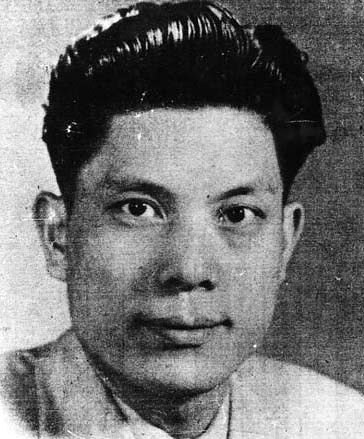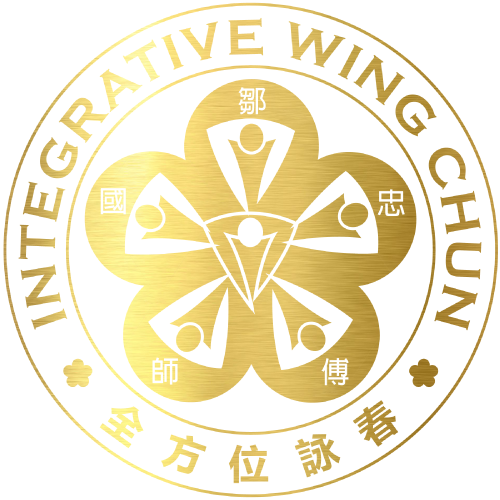LEUNG SHEUNG

LEUNG SHEUNG
- Ip Man
- Leung Sheung
Sifu Leung Sheung, the senior-most student of Wing Chun grandmaster Yip Man. Born in 1918 in Guangdong Province, China. The epitome of humility and selflessness, he was content to let his amazing martial arts prowess do all the talking for him. Always humble about his accomplishments compared to that of what he felt was due credit towards Master Yip’s tutelage. Without a doubt Leung Sheun played an amplifying role as one of Wing Chun’s greatest students.
As a young boy, he resided in the culturally diverse area of Macau–a former Portuguese Colony near Hong Kong and at the mouth of Pearl River. Here his days were spent among vast cultural influences from both eastern and western worlds. As a young man, Leung Sheung family believed the importance of great patriotism by cultivating both his physical and martial strength. He saw this as integral for the protection of his beloved homeland.
At 14, Leung Sheung began his journey in traditional Chinese martial arts and over the years immersed himself in many styles, such as White Eye-Brow, Choi Lee Fut, and Wing Chun. He learned from some of the most talented teachers like Yip Gun, Teng Shui, and Wong Cheong to name a few. Throughout his life he sacrificed much time to promote these valuable practices while inspiring those around him with enthusiasm for mastering them.
Leung Sheung’s persistence and deep devotion to martial arts enabled him to become a successful student in spite of the obstacles he faced due to frequent relocations. He was able to use his resourcefulness and dedication to learn from local teachers and friends, wherever life took him.
Leung Sheung was renowned for his many talents, from restauranteur to lion dance performer and martial artist. He had a great affinity with the Lion Dance. A tradition in Hong Kong was for Merchants to extend baskets full of vegetables and money from their balconies to reward the dancing lions below.
The traditional Chinese tradition of a Lion Dance requires skillful performers – but it’s even more thrilling for the lion dancers when tall and strong Leung Sheung is anchoring them up! With amazing agility, three people would climb on top of one another in order to create the ‘lion’ formation. The special bundle containing “lucky money” was then taken by its mouth as part of this captivating performance. All the lion dancers desired a strong leader to act as their base, and he was a perfect choice. Standing at an impressive height of 5’11”, with a weight of 200 pounds, he embodied strength and power.
Leung Sheung established his name in the restaurant industry as a visionary leader, bringing about the success of Hong Kong Restaurant Workers’ Union. His skill in public relations enabled rapid expansion and growth under his tenure as its first General Secretary – paving the way for workers’ rights and dignity throughout Hong Kong.
The Restaurant Association was playing a vital role in providing shelter for individuals escaping Communist rule by supplying lodging through their flat located in Kowloon. For many people, this humble abode was the only refuge from the persecution they faced back home – despite having to cram 40-50 occupants into one small room. With such an influx of immigrants seeking solace and employment opportunities within Hong Kong’s borders. The compact space provided by Leung’s efforts enabled individuals temporary lodgings for restaurant staff hoping for better opportunities on foreign soil.
Leung Sheung was renowned for his advanced knowledge of the powerful Dragon Style martial art. He taught and practiced this fierce style in a flat.
When a teaching position opened within the Martial Arts branch of Hong Kong’s Restaurant Workers Union, union members nominated Leung Sheung as an ideal candidate. Despite their outpouring encouragement, he remained committed to finding someone even better qualified for the role.
From a young age, Leung Sheung had heard tales of the mysterious and well-protected martial art known as Wing Chun. He was captivated by its stories–especially those involving one of its famous teachers Yip Man—and his aspiration to learn this skill grew stronger each day the desire to take Wing Chun was steadily growing in his mind. He would train Wing Chun The first Opportunity that would present itself.
Mr. Lee, an officer in the Restaurant Association and a friend of Leung Shung, had stumbled across an incredible opportunity – Yip Man was currently residing in Hong Kong! Spurred on by his passion for Wing Chun, Leung Sheung eagerly requested that Mr. Lee introduce him to this revered martial arts master when they finally met; he knew then and there that learning from Yip Man would be an invaluable experience.
Leung Sheung was so impressed by Yip Man’s Wing Chun skills that he offered him a teaching position in his flat. To further show support for the martial art, Leung forsook all of his previous training to become one of Yip Man’s students and handed over his White Eyebrow class for Ip man to take over.
In 1955 he returned to Macau and taught Wing Chun during the one year he was there. Leung Sheung, Lok Yiu, Chu Shong-tin, and Wong Sheng Leuang were the first generation of teachers to be trained by Wing Chun master Yip Man. Highly respected for their martial arts prowess, they are remembered not only as four of his most distinguished students but also as champions who popularized this ancient Chinese system throughout Hong Kong in 1956.
Leung Sheung is a mysterious figure in martial arts history, an adept Wing Chun instructor who mentored students from 1956 to 1978 with no advertisement. With his belief that only practical application can verify theory, Leung’s skill was widely recognized and praised for experimental innovation enabled by prior training experience. His rare expression of wisdom: “You find me, you are lucky” serves as the embodiment of both his teaching philosophy and legend status among devotees today.
With a gift for passing down martial arts, Leung Sheung was renowned both as an instructor and mentor. Thanks to his patience and dedication, many of his students flourished – it came to be said that those who learned from him could become masters of ‘sticky hands’. Such acclaim is a testament to the skill he displayed in cultivating their talent.
Leung Sheung had a unique teaching philosophy for Wing Chun – viewing his students as driftwood. He likened himself to someone on the banks of a wide river, picking up wood that was washed ashore from time to time in order to find pieces he could shape and mold into something much greater than its initial form. Not all driftwood is malleable though; some contain too many imperfections or flaws which prevent them from being crafted by the master’s hands. He was a demanding master, for those students who met his exacting standards, they were deemed appropriate pieces of driftwood to be kept. However, for the others with “too many knots,” it meant only one thing: being cast back into the river.
In 1968, Bruce Lee made a triumphant return to Hong Kong for the purpose of shooting an upcoming movie. During his time there, he formed a meaningful bond with Leung Sheung which was based on mutual respect and admiration; so much that both Chu Shong-tin and Bruce himself deemed him their older sibling.
Leung Sheung has made a lasting impact on martial arts worldwide, even after his untimely passing in 1978 due to declining health just eight years prior. With limited archival sources and stories left behind, Leung Sheung’s legacy continues to live through the spread of Wing Chun—the art he helped bring into the limelight during its infancy stage. He may be gone but will never be forgotten for his immense contributions that have allowed future generations to experience this beautiful craft.
CONTACT US
